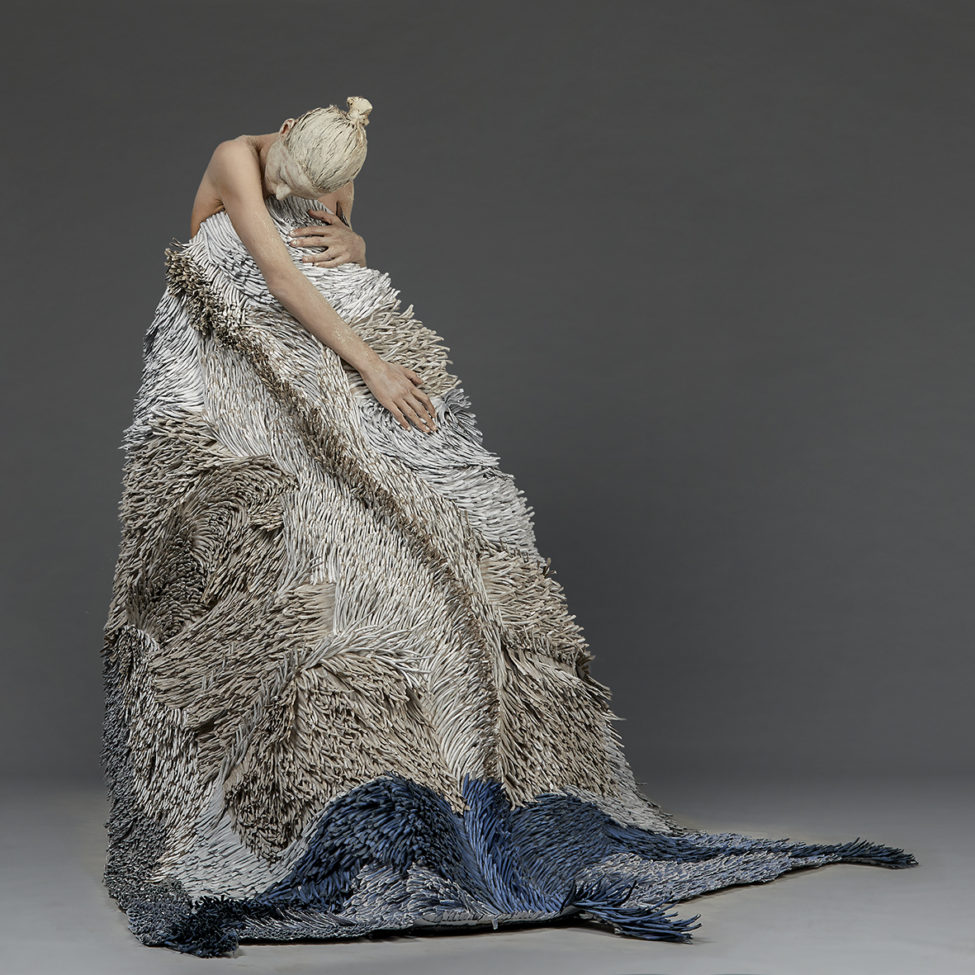Who will protect us? Who we will behold us?
Bianca Severijns
Palazzo Mora, Venice
11.5.19 – 24.11.19
For Dutch-Israeli contemporary paper artist Bianca Severijns, art began as a study of the cycles of nature and progressed to social and humanistic themes. Uprooting herself from her native country, Severijns relates strongly to the concept of displacement and examines the basic needs of refugees, asylum seekers and victims of natural and manmade disasters. The artist chose the concept of blanket as a metaphor to convey fundamental needs and human rights, such as equality, integrity and humanity.
Blankets welcome us into the world and envelop us as we leave it. Although often perceived as an ordinary object, a blanket is loaded with associations, connotations and expectations. It holds promise of care, warmth and protection. Inside a blanket one can experience silence, an escape from confusion and chaos. Blankets can sometimes make the difference between life and death. The human body will succumb to hypothermia faster than to starvation.
The association to Joseph Beuys is instinctive. He claimed that after crashing his warplane in WWII, Tatar shamans saved him by treating his wounds with fat and wrapping his body in felt. The theme of felt blanket as a survival necessity runs as a thread in Beuys' artwork
Severijns' quest for a deeper exploration of the displacement theme, led her towards media images of aid organizations whose first action upon contact was to offer blankets to help traumatized people feel safe, warm and looked after. Another source of inspiration came from Japanese photographer Manabu Yamanaku's images of homeless men wrapped in blankets. The striking impression is of men who lost so much but still hold onto their blanket as a basic psychological and physical necessity for survival.
For this exhibition Severijns created a reconceptualization of a humanitarian protective blanket titled “Who will protect us? Who will behold us?” which echoes the themes of Personal Structures, Time, Space and Existence. She uses a unique technique, constructed by esthetically weaving and layering thousands of hand-torn pieces of paper. This process leaves a ruggedness and raw edge, analogous to being torn away from all ties and belongings when displaced. Some of the patterns used on the blanket symbolize scars and scratches left from being torn, reflecting the psychological and physical hardships of displacement. The layered texture and color scheme aim to capture global, regional, local, familial and personal dimensions of displacement while forming a unified, holistic and humanistic theme.
The artist presents two Protective blankets, which differ by their texture and color. The idea of the first artwork resembles a hide of an animal and takes the viewer back to our first manmade protective blankets, needed for little less than shelter and warmth, while the complicated modern design of the second artwork relates to the complexness of our modern human protection to feel well treated, safe and respected.
The need for a humanitarian protective blanket during various stages of our human history has increased despite our highly developed cognitive and emotional worlds and technological developments. During our lives, we seek and offer protection, which is not always ensured.
Bianca Severijns invites the audience to actively participate in shaping her protective blanket and share their comments on strips of paper which the artist will use to create a new blanket.
Shira Davidi and Dorit Lautman,
Exhibition Curators



